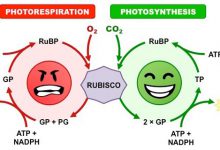Slime mold with Structure and Types of Reproduction
Slime mold is fungi like organism and due to the certain characteristics, these are included in kingdom protoctista.
Structure
Slime mold consists of a mass of cytoplasm which is covered by plasma membrane and a slimy layer. Cell wall is absent, the naked cytoplasm contains many nuclei and looks like egg white. The cytoplasm consists of outer ectoplasm and inner endoplasm parts.
The slime mold is also called plasmodium. It grows on moist and shady places and produces many pseudopodia. Which help in amoeboid movement. It takes bacteria and other food particles by the help of pseudopodia. It also contains food vacuoles in the cytoplasm.
Life cycle of slime mold
The life cycle of slime mold shows two types of reprduction:
(i) Asexual Reproduction (ii) Sexual reproduction
Asexual reproduction
In slime mold the asexual reproduction takes place by sporangia. Also called fruiting bodies. These sporangia are produced on small stalks. The sporangia are small and golf-ball like. They may be of different colours.
In sporangia many spores are produced by meosis, so these are haploid spores. These spores are released from sporangia and dispersed by wind or rain to different places.
Germination of spores
The spores of slime mold germinate on soil, leaves or piece of wood. They many produce two types of structures.
(i)SWARM SPORES
(ii) MYXAMOEBAE
Swarm cells
Each spore of slime mold produces one to four small, spindle-shaped swarm cells. These swarm spores are biflagellate. One flagellum is short and one is long.they contain only one nucleus.
Myxamoebae
Sometimes the spores of slime mold produce one to four amoeboid cells, called myxamoebae. They are usually produced in dry conditions. They may divide again to form many myxamoebae.
Sexual reproduction
The swarm cells and myxamoebae of slime mold may act as gametes and take part in sexual reproduction. The swarm cells fuse by their posterior ends and form zygote. Similarly the myxamoebae may fuse togather to form zygote. The zygote is binucleate, the two nuclei fuse togather to form diploid nucleus.
Formation of slime mold from zygote
The diploid nucleus of zygote divides by mitosis to form many nuclei. The zygote develops into a young slime mold (Plasmodium), then gradually it is changed into a new plasmodium.







It’s very straightforward to find out any matter on web as compared to books,
as I found this post at this site.
thank you for comments
yes,indeed, this is reason of popularity of worldwide web now a days
This is really interesting, You are an excessively skilled blogger. I’ve joined your rss feed and stay up for searching for more of your wonderful post. Also, I’ve shared your web site in my social networks!
Thank You.
Nice post. I was checking continuously this blog and I am impressed! Very useful info specifically the last part :) I care for such information a lot. I was looking for this particular information for a very long time. Thank you and good luck.